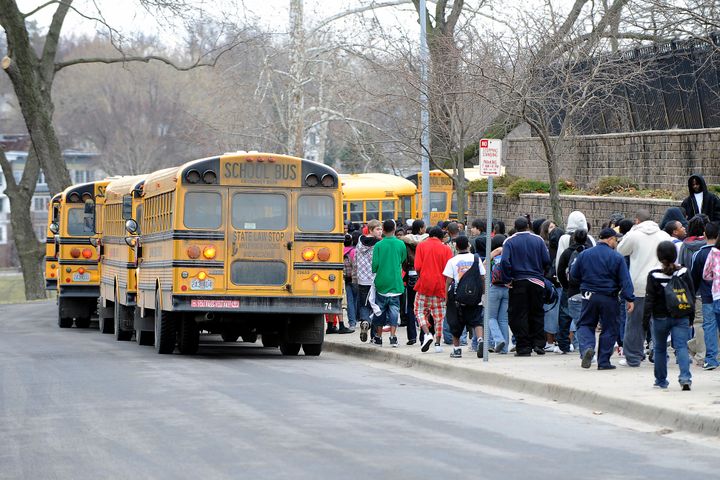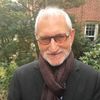
With all the hoopla about the anointment of Congressman Paul Ryan as Mitt Romney's running mate, it is easy to lose sight of potentially devastating educational developments that the latest news cycle has pushed into the background. Last week, for example, Missouri voters overwhelmingly passed a "right to pray" amendment that is designed to protect Missouri's predominantly Christian population (80 percent) from the "godless abuses" of public education. Here's the text of the amendment:
Shall the Missouri Constitution be amended to ensure:
- That the right of Missouri citizens to express their religious beliefs shall not be infringed;
- That school children have the right to pray and acknowledge God voluntarily in their schools; and
- That all public schools shall display the Bill of Rights of the United States Constitution.
The Missouri Constitution and the Bill of Rights, of course, already cover the aforementioned clauses. One clause of the amendment, however, is of great concern -- especially to scholars who teach courses in the humanities, the social sciences and the biological sciences.
No student shall be compelled to perform or participate in academic assignments or educational presentations that violate his or her religious beliefs
I've been teaching a course in the anthropology of religion for more than 30 years. That course has been designed and re-designed to challenge the "received wisdom" of religious belief and practice. The challenge is not to dictate a philosophical position or to champion a particular religious practice, but to demonstrate respectfully the rich cross-cultural diversity of religious beliefs and practices in the world and to underscore the complex relationship among religion, social life, and politics.
At the beginning of the course I tell the students that they will be exposed to materials designed to shock their routine sensibilities. The surrealists long ago believed that shocking images could wake people from the ongoing slumber of their religious or cultural socialization. Men like André Breton and Antonin Artaud believed that you could use images in art, theater, photography and film to disturb the equilibrium of a person's existential foundation. In this state of disequilibrium the person would suddenly be able to think more clearly and critically. In such a state, they argued, people could make judgments that would be liberated from the baggage of their upbringing. Exposure to unsettling images might enable a person to chart a new course in life. By the same token, a shocking experience might convince a person to adhere even more strongly to their particular religious or cultural tradition. In my anthropology of religion class, I try to create a classroom setting in which students are challenged to think for themselves.
During the first class session of the class, I show Jean Rouch's classic ethnographic film on spirit possession -- Les Maitres Fous (The Crazy Masters [1954]). I ask the students to take notes and pay attention to how the film's images challenge their beliefs. It is a film that features a set of unforgettably shocking scenes: West Africans in colonial Ghana possessed by "European" spirits (The Governor General, The General of the Red Sea, The Doctor, The Wicked Major, and The Train Engineer). When these "new gods" take the bodies of their mediums, The Crazy Masters, as they are called to mimic colonial officials, shake uncontrollably. They handle fire without burning themselves. Their bulging eyes blaze with intensity. Salvia foams from their mouths as they speak in tongues -- several West African languages as well as English and French. A dog is sacrificed and The Crazy Masters not only drink its blood but also eat its boiled flesh -- an unsettling montage of images to say the least!
To contextualize the expected revulsion of such exotic transgression, I then screen Peter Adair's documentary, The Holy Ghost People (1962), set in Scrabble Creek, W. Va., in which rural white folks dance, pray, get possessed by the Holy Ghost and handle poisonous snakes -- a more familiar transgression. Again I ask the students to take notes and to compare and contrast the two rituals -- one set in West Africa; the other set in West Virginia. The films always trigger a great deal of classroom discussion. The students are routinely surprised to learn that spirit possession ceremonies are not only regularly performed in America, but that such seemingly "exotic rites" often employ a Christian idiom. For the next class session, I ask them to write short reaction papers on the films. These are read and discussed. Although the students usually struggle to come to terms with what they have seen, they sometimes remark that the films compelled them to think a new thought or feel a new feeling.
On occasion students cannot bear to watch the films. Some of them end up dropping the course. In one case, a student went to the Dean of College of Arts and Sciences at my university and complained that I had exposed the class to "satanic influences." She, too, dropped the course, an act that protected the sensibilities of her upbringing from the twists and turns of higher education.
If the Missouri amendment had been in force in my state, any number of students would have refused to watch, discuss or write about the transgressive films that I had screened. I would potentially face the same difficulties teaching students about systems of magical healing, sorcery, or witchcraft. Would I be able to gives lectures on Islam to students who believe that the Prophet's religion is evil? Would I be able to ask students who see Marx as the antichrist to write essays on Marx's ideas about religion?
In the end, higher education is not about re-affirming a set of narrow-minded beliefs; it is about the broad exploration of a wide-ranging set of beliefs and practices, some of which may disturb student sensibilities. Higher education is not about following a well-trodden path of social expectation -- whatever direction it may take -- but of learning how to think for oneself in an increasing complex and confusing world.
The Missouri amendment, which seems to have been fashioned by people with little knowledge of teaching and much fear of "higher order thinking," would obstruct the give and take of classroom debate, making it virtually impossible to teach courses in which professors challenge their students to prepare them to become citizens of an increasing complex and interconnected world.
Is it not madness to do everything in your power to undermine the education of our future generations?
